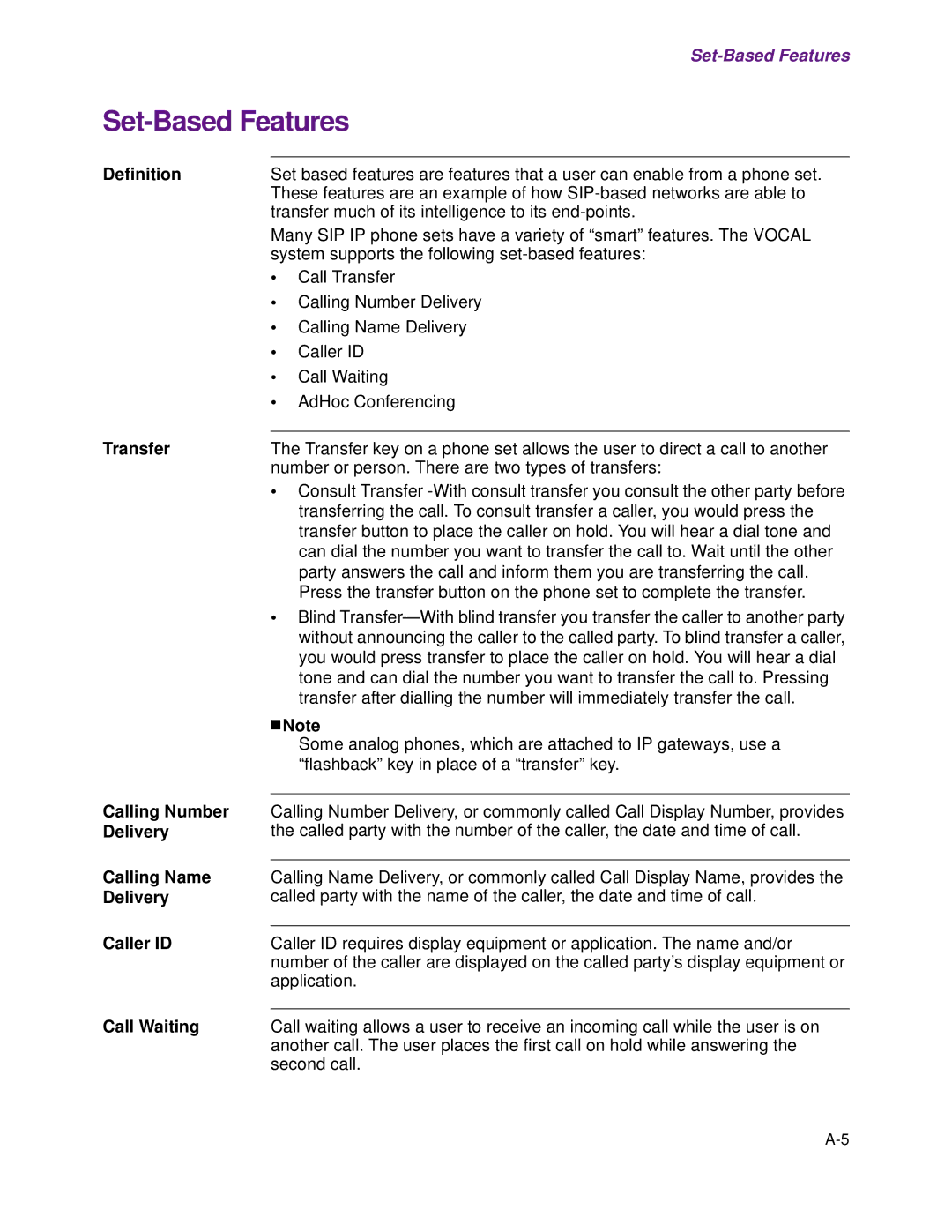|
| |
| ||
Definition |
| |
Set based features are features that a user can enable from a phone set. | ||
| These features are an example of how | |
| transfer much of its intelligence to its | |
| Many SIP IP phone sets have a variety of “smart” features. The VOCAL | |
| system supports the following | |
| • | Call Transfer |
| • | Calling Number Delivery |
| • | Calling Name Delivery |
| • | Caller ID |
| • | Call Waiting |
| • | AdHoc Conferencing |
Transfer |
| |
The Transfer key on a phone set allows the user to direct a call to another | ||
| number or person. There are two types of transfers: | |
| • Consult Transfer | |
|
| transferring the call. To consult transfer a caller, you would press the |
|
| transfer button to place the caller on hold. You will hear a dial tone and |
|
| can dial the number you want to transfer the call to. Wait until the other |
|
| party answers the call and inform them you are transferring the call. |
|
| Press the transfer button on the phone set to complete the transfer. |
| • Blind Transfer— With blind transfer you transfer the caller to another party | |
|
| without announcing the caller to the called party. To blind transfer a caller, |
|
| you would press transfer to place the caller on hold. You will hear a dial |
|
| tone and can dial the number you want to transfer the call to. Pressing |
|
| transfer after dialling the number will immediately transfer the call. |
|
| Note |
|
| |
|
| |
|
| Some analog phones, which are attached to IP gateways, use a |
|
| “flashback” key in place of a “transfer” key. |
Calling Number |
| |
Calling Number Delivery, or commonly called Call Display Number, provides | ||
Delivery | the called party with the number of the caller, the date and time of call. | |
Calling Name |
| |
Calling Name Delivery, or commonly called Call Display Name, provides the | ||
Delivery | called party with the name of the caller, the date and time of call. | |
Caller ID |
| |
Caller ID requires display equipment or application. The name and/or | ||
| number of the caller are displayed on the called party’s display equipment or | |
| application. | |
Call Waiting |
| |
Call waiting allows a user to receive an incoming call while the user is on | ||
| another call. The user places the first call on hold while answering the | |
| second call. | |
